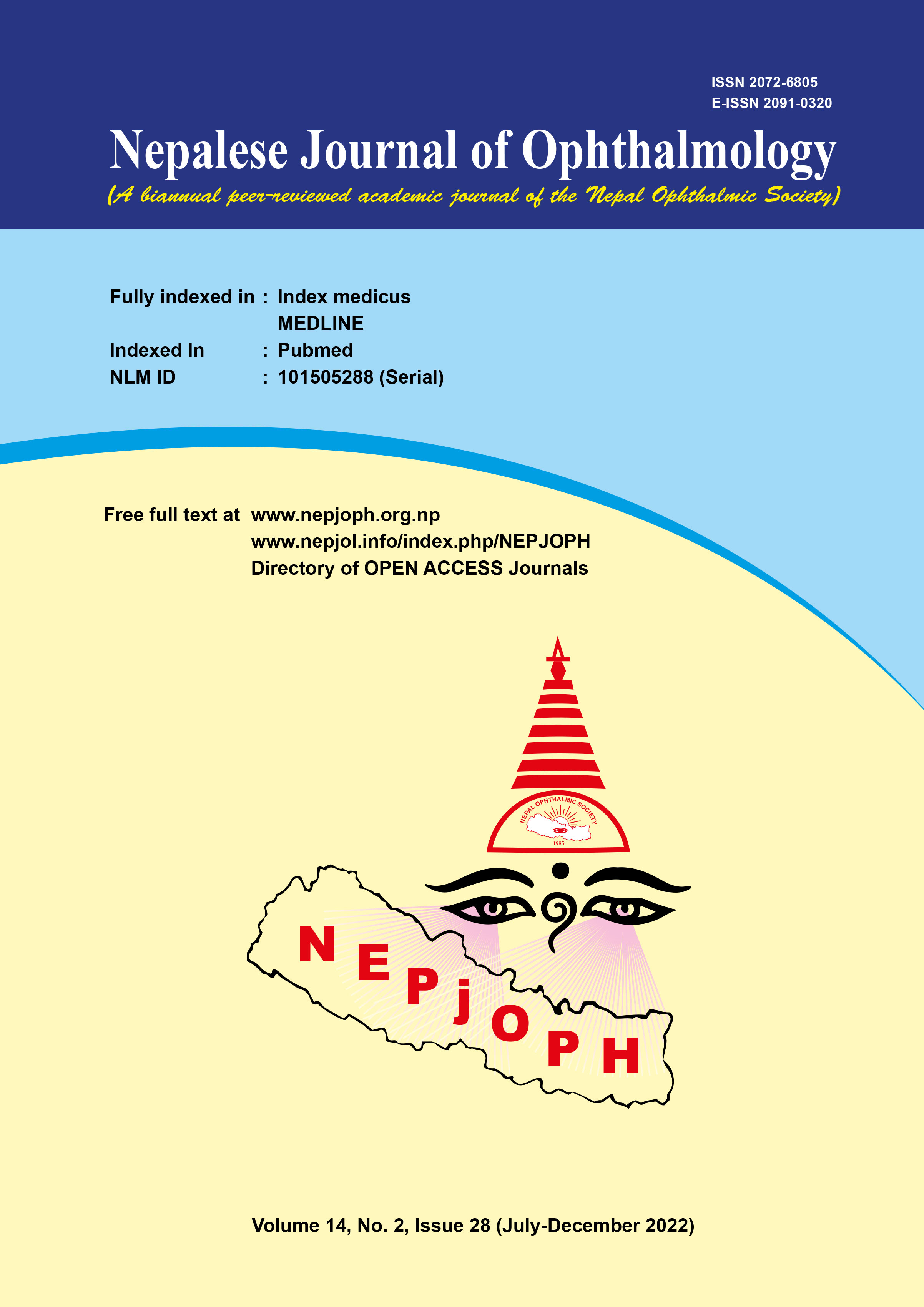Dry eye syndrome among patients with type II diabetes mellitus in a tertiary care centre in South India
DOI:
https://doi.org/10.3126/nepjoph.v14i2.40046Keywords:
Diabetes mellitus, Dry eye syndrome, Schirmer’s test, Tear break up time, Tear meniscus heightAbstract
Introduction: One of the leading causes of dry eye syndrome (DES) is found to be diabetes mellitus (DM). The current study was conducted to detect possible tear film anomalies among diabetic individuals attributable to dry eye. The study aimed to assess the proportion of dry eye syndrome among patients with Type 2 diabetes mellitus.
Materials and methods: Two hundred patients with Type 2 diabetes mellitus who came to the Ophthalmology OPD from October 2018 to November 2020 in the 29-60 years age group were included in the study. Patient data, diabetic history, dry eye symptoms, blood sugar values and tests to measure tear volume and tear film instability were carried out among patients and dry eyes were graded.
Results: The proportion of patients with dry eye symptoms among Type 2 diabetes mellitus were 61%. Mild dry eye syndrome was observed in 27%, moderate dry eye syndrome in 59% and severe dry eye syndrome in 14%. A statistically significant difference (p<0.05) was noted between the severity of dry eye syndrome and dry eye test parameters. A strong positive correlation (r = 0.923) was noted between severity of dry eye syndrome and Standardised Patient Evaluation of Eye Dryness (SPEED) score which was statistically significant (p < 0.001).
Conclusion: In our study, there was higher prevalence of dry eyes in patients who had Type 2 diabetes Mellitus which might be attributed to reduced tear secretion in diabetes mellitus patients caused by autonomic dysfunction in these patients. We recommend that dry eye evaluation should be an integral part of ocular examination in diabetic patients for early detection and treatment so that further complications can be prevented, which may lead to severe visual impairment.
Downloads
Downloads
Published
How to Cite
Issue
Section
License
Copyright (c) 2022 Nepalese Journal of Ophthalmology

This work is licensed under a Creative Commons Attribution-NonCommercial-NoDerivatives 4.0 International License.
This license enables reusers to copy and distribute the material in any medium or format in unadapted form only, for noncommercial purposes only, and only so long as attribution is given to the creator.




